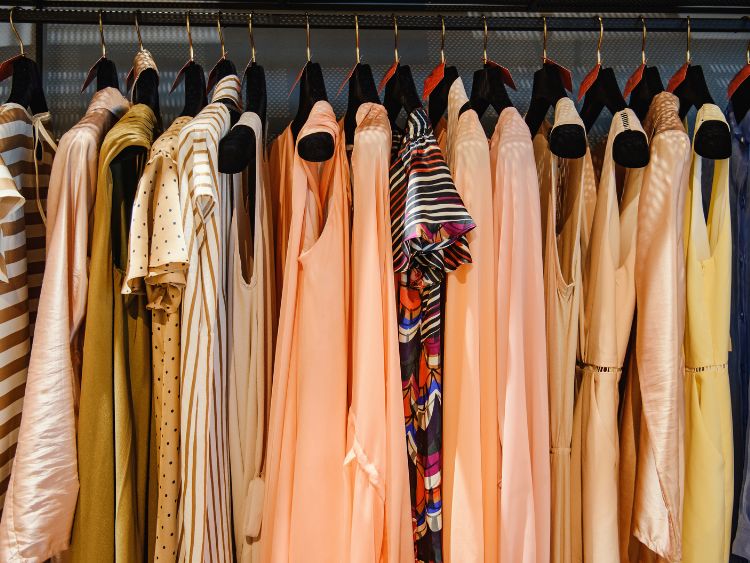The 1930s was a decade marked by economic turmoil, yet it gave birth to some of the most elegant and enduring fashion trends in history. Even with the shadow of the Great Depression looming, women and men found ways to stay stylish, emphasizing class, refinement, and timeless beauty. So, what made 1930s fashion stand out? From the rise of Hollywood glamour to the prominence of sleek silhouettes, this era redefined what it meant to dress with grace. Let’s dive into the details of this iconic decade.
Key Fashion Trends of the 1930s
- The Influence of Hollywood Glamour
One can’t talk about 1930s fashion without acknowledging the colossal impact of Hollywood. With the Golden Age of cinema in full swing, stars like Greta Garbo and Clark Gable became fashion icons. Their on-screen styles, characterized by sophistication and allure, trickled down to everyday wear. Women flocked to mimic the flowing evening gowns and fur stoles, while men admired the tailored suits and polished looks seen in the movies. - Silhouettes and Styles of the 1930s
While the 1920s embraced looser, more boyish silhouettes, the 1930s fashion scene saw a shift back to feminine curves and elegant lines. Women’s dresses emphasized a nipped waist, with flared skirts that grazed the ankles. Bias-cut gowns, a revolutionary technique developed by designer Madeleine Vionnet, allowed fabrics to drape and move naturally, enhancing the wearer’s form.
Men’s fashion, on the other hand, leaned toward well-fitted suits with broad shoulders and tapered waists, giving an athletic and dignified appearance. Trousers were often high-waisted and pleated, further enhancing the sharp and clean look of the decade.
Accessories: The Finishing Touches
- Hats: The Defining Accessory
No 1930s fashion outfit was complete without a statement hat. For women, cloche hats (a holdover from the 1920s) continued to dominate, though they evolved to feature wider brims and softer shapes. Berets and turbans also gained popularity, adding an air of sophistication. As for men, fedoras reigned supreme. These felt hats were both functional and fashionable, symbolizing the everyday gentleman. - Gloves and Jewelry
Another hallmark of 1930s fashion was the use of gloves. Women rarely left the house without a pair of elegant gloves, often made from silk, leather, or lace. These accessories added a layer of refinement to any ensemble. Jewelry also became a focal point—think brooches, pearls, and sparkling Art Deco designs that reflected the opulence of the time.
Fabric and Color Choices
- Luxurious Yet Practical Materials
Despite the financial hardships of the time, 1930s fashion didn’t shy away from luxury. Silk, satin, and velvet were commonly used in evening wear, while more affordable fabrics like cotton and rayon dominated day-to-day attire. These fabrics allowed for creativity without sacrificing comfort.
Color-wise, the palette of the decade was largely subdued—think earthy tones like beige, brown, and navy. However, for evening attire, jewel tones such as emerald green, royal blue, and deep purples made striking appearances, adding a touch of drama.
The Role of Fashion During the Great Depression
- Fashion on a Budget
Even with financial struggles, people found ways to remain fashionable. Homemade clothing became more common, with women learning to sew and repurpose old garments. Simplicity was key—functional, durable, and adaptable outfits became popular. Yet, no matter how modest the means, the pursuit of elegance never waned.
Famous Designers of the 1930s
- Coco Chanel
When discussing 1930s fashion, we can’t overlook the influence of Coco Chanel. Known for her minimalist approach, Chanel continued to revolutionize women’s fashion during this era. She introduced more casual, practical garments, like the now-iconic tweed suit, which offered both comfort and elegance. - Elsa Schiaparelli
A contemporary of Chanel, Elsa Schiaparelli made waves with her avant-garde designs. Famous for her collaborations with artists like Salvador Dalí, Schiaparelli brought surrealism into the world of 1930s fashion. Her bold use of color (think “shocking pink”) and whimsical embellishments set her apart in a world that often favored conservative styles.
FAQs
Q: What were the key features of 1930s women’s fashion?
The key features of 1930s fashion for women included fitted waists, flowing skirts, bias-cut gowns, and a focus on feminine curves. Accessories like hats, gloves, and pearls were essential to completing any outfit.
Q: How did men dress in the 1930s?
Men in the 1930s often wore tailored suits with broad shoulders, high-waisted trousers, and fedoras. The look was sharp and polished, emphasizing clean lines and a masculine silhouette.
Q: What impact did Hollywood have on 1930s fashion?
Hollywood had a massive influence on 1930s fashion, with movie stars like Greta Garbo setting trends. The glamorous outfits seen in films inspired everyday wear, particularly in evening dresses and accessories.
Q: What materials were popular in 1930s clothing?
Popular materials in 1930s fashion included silk, satin, velvet, cotton, and rayon. Luxurious fabrics were often reserved for evening wear, while more practical materials dominated everyday attire.
Conclusion: A Legacy of Style and Grace
Despite the challenges of the Great Depression, 1930s fashion demonstrated that elegance could thrive even in difficult times. With influences from Hollywood, innovative designers like Chanel and Schiaparelli, and an emphasis on refined silhouettes, the decade remains one of the most iconic periods in fashion history. The timeless appeal of this era continues to inspire designers and fashion lovers alike.
Authoritative Links:
- www.fashionhistory.edu/1930s
- www.vintagefashionguild.org/1930s
- www.fashionencyclopedia.com/1930s

